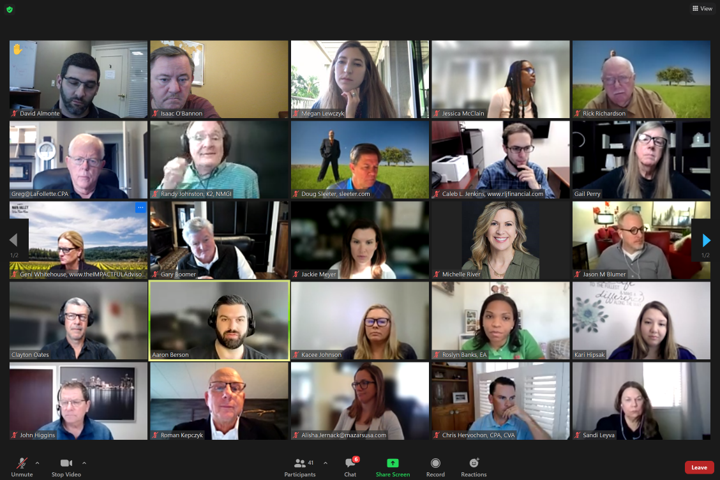I know many people who thrive on virtual meetings. They tell me work life is so much better now that they can have meetings online in a Zoom or Teams or Google Meet format rather than having to walk down the hall and meet with their colleagues in person like we did in the good old days. And of course it’s more than avoiding the stroll down the corridor – the ease of using video conferencing technology has transformed the meeting process so that remote employees can be met with, as well as colleagues and clients across town or even around the globe.
On the other hand, I hear from equally as many people who are not exactly on board when it comes to virtual meetings. They make pleas to be left off the call list – “Just send me a quick update in email with whatever you discussed and where I need to weigh in.”
Modern alternative to phone calls: If you want to talk with someone, you need to set up a virtual meeting. You need to be dressed properly (at least the part that’s visible on-screen) and have hair combed, and you need to straighten the work area behind your desk so the background view will be presentable. Or you can use one of those fake backgrounds that cut off the sides of your head every time you move.
Here’s how the process goes. Someone will email me and ask when I have time for a quick call. I check my calendar, and then reply in email with a few dates and times. The call-initiator then looks at his or her calendar and lets me know where we have times in common. Then there is a back-and-forth as to which of us should send a calendar invite. Then the invite goes out and we each get it on our calendar. Then the time comes for the call and we jump online and see each other onscreen while we have our quick call, which might last an hour, or it might be just a five to ten minute call, in which case we spent way more time arranging the call when we could have just picked up the phone (remember phones?) and made the call that way.
Setting up the call can get exponentially more complicated when there are many people involved, as the calendars have to be checked for each potential attendee, invites go out, frequently someone declines because a conflicting meeting didn’t get added to that person’s calendar, the call is rescheduled.
[At this point, while writing this piece, my phone rang! No video, no scheduling, just a simple phone call! I thanked the caller profusely.]
Downsides to the world of video conferencing include technical difficulties (these seem less frequent to me than they were at the start of the pandemic, however weak internet connections can still wreak havoc), the embarrassment of the ubiquitous “You’re on mute” reminders from colleagues, and the fact that many people feel uncomfortable while on camera.
Let’s get back to those who are all in when it comes to video calls. There is much positive feedback from those who enjoy being able to chat visually with people who are remote workers as well as those who are geographically disbursed. Not only is there money to be saved by not having to transport people to meetings, but geography no longer limits who can be hired for a job, nor does it limit where your clients might be based.
Many people think video calls are more engaging than traditional calls, and another benefit is the ability to easily record and even transcribe the meetings. Screen-sharing can be seen as a plus – more efficient than handing out a pack of papers to people sitting around a conference table.
Whether you are a fan of video conferencing, look forward to returning to in-office meetings, or stand somewhere in between, you can be sure the process is here to stay. And thanks to the speed at which modern technology moves, I believe it’s safe to say we will see new features and improvements in the near future.
Thanks for reading CPA Practice Advisor!
Subscribe Already registered? Log In
Need more information? Read the FAQs




